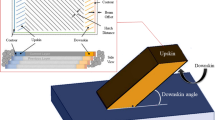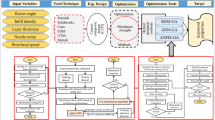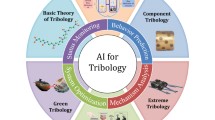Abstract
Multi-point forming with individually controlled force–displacement (MPF-ICFD) is a novel multi-point forming process with characteristics of good deformation uniformity and high forming accuracy. The process has two different deformation sequences: positive forming (PF) and negative forming (NF). The shape accuracy of a part is significantly different when the deformation order is changed. To reveal the influence mechanism of the deformation sequence on shape accuracy, experiments and numerical simulations are used to assess shape accuracy during multi-point forming. The deformation behaviours of a cylindrical surface, sail surface and saddle surface in PF and NF processes are investigated to obtain the shape accuracy characteristics of a sheet under different deformation sequences. In addition, the strain distribution characteristics of the cylindrical surface are given quantitatively. The influence mechanism of the deformation sequence on the shape accuracy is revealed. The results show that the amount of plastic deformation on the part is significantly increased and the shape accuracy is significantly improved during the PF process. When the loading conditions are identical, the maximum strain of the cylindrical parts is increased by 73.4%, and the amount of springback is decreased by 90.0%. The above research indicates that the PF process has good application prospects in sheet metal forming.















Similar content being viewed by others
Data availability
Not applicable.
Code Availability
Not applicable.
References
Cheng HC, Wu DL, Fan XM (2019) Modeling and simulation of sheet-metal part deformation in virtual assembly. J Amb Intel Hum Comp 10:1231–1240. https://doi.org/10.1007/s12652-018-0884-2
Pascal F, Michael S, Normen F, Christoph W, Wilko F (2020) Prediction of metal sheet forming based on a geometrical model approach. Int J Mater Form 13:829–839. https://doi.org/10.1007/s12289-019-01529-9
Park YH, Sakai J (2020) Optimum design of composite pressure vessel structure based on 3-dimensional failure criteria. Int J Mater Form 13:957–965. https://doi.org/10.1007/s12289-019-01519-x
Hyungrim L, Namsu P, Minki K, Myoung GL, Jung HS (2022) Recent developments and trends in flexible forming technology. Int J Auto Tech-Kor 23:741–763. https://doi.org/10.1007/s12239-022-0067-1
Park JW, Ku TW, Kim J, Kim KH, Kang BS (2016) Tool fabrication for composite forming of aircraft winglet using multi-point dieless forming. J Mech Sci Technol 30:2203–2210. https://doi.org/10.1007/s12206-016-0428-7
Qu EH, Li MZ, Li R (2019) Improving effect on forming quality and accuracy using a polyurethane board positioning/resetting the discrete steel pad in multi-point forming. Int J Min Met Mater 26:447–459. https://doi.org/10.1007/s12613-019-1752-6
Liu CG, Li M, Yue T (2021) Springback prediction method for double-curved workpiece considering plate anisotropy in multi-point forming. J Mech Sci Technol 35:2623–2636. https://doi.org/10.1007/s12206-021-0533-0
Behrooz ZD, Behnam D, Ali VS (2017) Investigation of deep drawing concept of multi-point forming process in terms of prevalent defects. Int J Mater Form 10:193–203. https://doi.org/10.1007/s12289-015-1268-1
Qu EH, Li MZ, Li R (2019) Study on the multi-point forming process with a swinging punch unit. Int J Adv Manuf Tech 104:675–685. https://doi.org/10.1007/s00170-019-03726-x
Qu EH, Li MZ, Li R (2019) Research on the forming accuracy in the multi-point forming procedure based on the discrete steel pad positioned/reset by a polyurethane pad. Int J Adv Manuf Tech 102:1923–1933. https://doi.org/10.1007/s00170-018-3193-1
Behnam D, Behrooz ZD (2014) Assessment of forming parameters influencing spring-back in multi-point forming process: A comprehensive experimental and numerical study. Mater Design 59:103–114. https://doi.org/10.1016/j.matdes.2014.02.043
Cai ZY, Wang SH, Xu XD, Li MZ (2009) Numerical simulation for the multi-point stretch forming process of sheet metal. J Mater Process Tech 209:396–407. https://doi.org/10.1016/j.jmatprotec.2008.02.010
Wang Y, Li MZ (2014) Research on three-dimensional surface parts in multi-gripper flexible stretch forming. Int J Adv Manuf Technol 71:1701–1707. https://doi.org/10.1007/s00170-014-5610-4
Wang SH, Cai ZY, Li MZ, Lan YW (2012) Numerical simulation on the local stress and local deformation in multi-point stretch forming process. Int J Adv Manuf Technol 60:901–911. https://doi.org/10.1007/s00170-011-3663-1
Naceur S, Hédi BHS (2013) Experimental implementation of the multipoint hydroforming process. Proceedings of the fifth international conference on design and modeling of mechanical systems. Dierba, Tunisia, March 25–27. https://doi.org/10.1007/978-3-642-37143-1_57
Shen W, Yan RJ, Lin Y, Fu HQ (2018) Residual stress analysis of hull plate in multi-point forming. J Constr Steel Res 148:65–76. https://doi.org/10.1016/j.jcsr.2018.05.017
Su SJ, Hu Y, Wang CF (2015) The key technology research about 3D CNC bending machine and experimental verification. J Coastal Res 73:584–588. https://doi.org/10.2112/SI73-101.1
Luo YX, Yang WM, Liu ZF, Wang YQ, Du RX (2016) Numerical simulation and experimental study on cyclic multi-point incremental forming process. Int J Adv Manuf Technol 85:1249–1259. https://doi.org/10.1007/s00170-015-8030-1
Li MZ, Cai ZY, Sui Z, Han QG (2002) Multi-point forming technology for sheet metal. J Mater Process Tech 129:333–338. https://doi.org/10.1016/s0924-0136(02)00685-4
Jia BB, Wang WW (2017) New process of multi-point forming with individually controlled force-displacement and mechanism of inhibiting springback. Int J Adv Manuf Technol 90:3801–3810. https://doi.org/10.1007/s00170-016-9709-7
Mohamed A, Khamis E, Ali A, Abror T, Su SZ, Duc P (2017) Optimisation of multi-point forming process parameters. Int J Adv Manuf Technol 92:1849–1859. https://doi.org/10.1007/s00170-017-0155-y
Funding
This work was supported by the Shandong Provincial Natural Science Foundation (No. ZR2020ME145) and the 333 High-level Talent Training Project of Jiangsu province (third level, 2022).
Author information
Authors and Affiliations
Contributions
Conceptualization, Methodology, Funding Acquisition, Writing-Original Draft, Experiment, Bin-bin Jia.; Conceptualization, Methodology, Experiment, Writing-Review & Editing, Funding Acquisition, Yan Shen.; Software, Experiment, Data Curation, Yanxia Gu. All authors have read and agreed to the published version of the manuscript.
Corresponding author
Ethics declarations
Ethics approval
This manuscript has not been previously published (in part or in whole, in any language), is not in press, and is not under consideration for publication elsewhere.
Consent to participate
Not applicable.
Competing interests
The authors declare that they have no known competing financial interests or personal relationships that could have appeared to influence the work reported in this paper.
Additional information
Publisher’s note
Springer Nature remains neutral with regard to jurisdictional claims in published maps and institutional affiliations.
Rights and permissions
Springer Nature or its licensor (e.g. a society or other partner) holds exclusive rights to this article under a publishing agreement with the author(s) or other rightsholder(s); author self-archiving of the accepted manuscript version of this article is solely governed by the terms of such publishing agreement and applicable law.
About this article
Cite this article
Jia, BB., Shen, Y. & Gu, Y. Influence of the deformation sequence on the shape accuracy of multi-point forming. Int J Mater Form 16, 66 (2023). https://doi.org/10.1007/s12289-023-01790-z
Received:
Accepted:
Published:
DOI: https://doi.org/10.1007/s12289-023-01790-z




